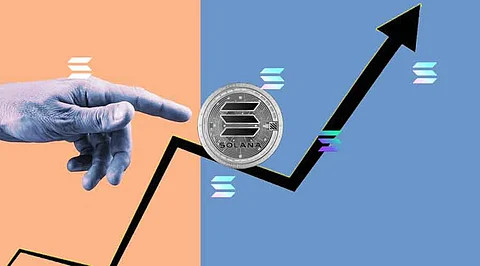

In the ever-evolving landscape of cryptocurrency, Solana (SOL) has captured the attention of investors and enthusiasts alike with its impressive performance and rapid rise in value. As one of the most promising blockchain platforms, Solana has not only demonstrated technological prowess but has also witnessed significant price movements. In this article, we will delve into the historical price movements of Solana, shedding light on the factors that have contributed to Solana's rapid rise.
Solana's journey began in March 2020, when the mainnet was launched. Initially, SOL tokens traded at a modest price, hovering around the $0.50 mark. However, the project's unique approach to scalability and high-speed transactions quickly attracted attention within the blockchain community.
Solana's breakthrough came with the explosive growth of decentralized finance (DeFi) in mid-2020. As DeFi projects sought fast and cost-effective blockchain solutions, Solana emerged as a preferred platform due to its high throughput and low fees. This surge in demand for Solana's technology coincided with a significant increase in SOL token value. By August 2020, SOL had surpassed the $3 mark, marking a substantial price increase. This uptrend continued as more DeFi projects and decentralized applications (dApps) chose Solana as their blockchain of choice.
The year 2021 was a monumental year for Solana. As the broader cryptocurrency market experienced a bull run, SOL saw exponential growth. In early 2021, SOL was trading at around $1, but by May 2021, it had surged past $50. This remarkable price increase can be attributed to several factors:
Technological Advancements: Solana's ability to handle thousands of transactions per second and maintain low transaction costs drew attention from developers and investors.
DeFi Projects: DeFi projects like Serum and Raydium, built on Solana, gained popularity, increasing demand for SOL tokens.
NFT Hype: The NFT (non-fungible token) craze also contributed to SOL's rise, as Solana became a preferred platform for NFT marketplaces.
Institutional Interest: Solana attracted interest from institutional investors looking for a high-performance blockchain platform.
While Solana's rapid rise brought excitement and enthusiasm, it also introduced price volatility. The cryptocurrency market is known for its price swings, and SOL was no exception. Investors experienced both significant gains and corrections as market sentiment fluctuated.
Solana's historical price movements reflect its journey from obscurity to prominence in the blockchain space. Its unique technological features, coupled with the rise of DeFi, NFTs, and institutional interest, propelled SOL to remarkable price levels. It's important for investors and enthusiasts to remember that the cryptocurrency market is highly dynamic and subject to rapid changes. While Solana's historical performance is impressive, it's essential to conduct thorough research, stay informed about market trends, and approach cryptocurrency investments with caution. As Solana continues to develop and expand its ecosystem, its price movements will likely remain a topic of interest and discussion within the blockchain community.
Join our WhatsApp Channel to get the latest news, exclusives and videos on WhatsApp
_____________
Disclaimer: Analytics Insight does not provide financial advice or guidance. Also note that the cryptocurrencies mentioned/listed on the website could potentially be scams, i.e. designed to induce you to invest financial resources that may be lost forever and not be recoverable once investments are made. You are responsible for conducting your own research (DYOR) before making any investments. Read more here.
